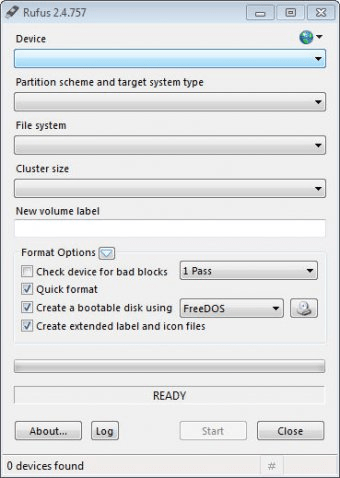

Many which do support USB booting may still be unable to boot the device in question.
Rufus for tails mac full#
LiveUSB OSes like Ubuntu Linux apply all filesystem writes to a casper filesystem overlay (casper-rw) that, once full or out of flash drive space, becomes unusable and the OS ceases to boot.However, as USB devices typically achieve lower data transfer rates than internal hard drives, booting from older computers that lack support for USB 2.0 or newer can be very slow. The absence of moving parts in USB flash devices allows true random access, thereby avoiding the rotational latency and seek time (see also mechanical latency) of hard drives or optical media, meaning small programs will start faster from a USB flash drive than from a local hard disk or live CD.On the other hand, a USB device is easily lost or stolen, so data encryption and backup is even more important than with a typical desktop system. a safe), reducing the opportunities for others to access their data. Live USBs provide the additional benefit of enhanced privacy because users can easily carry the USB device with them or store it in a secure location (e.g.A user can carry their preferred operating system, applications, configuration, and personal files with them, making it easy to share a single system between multiple users. In contrast to live CDs, the data contained on the booting device can be changed and additional data stored on the same device.Live USBs share many of the benefits and limitations of live CDs, and also incorporate their own.
Rufus for tails mac portable#
Specialized USB-based booting was proposed by IBM in 2004 with Reincarnating PCs with Portable SoulPads and Boot Linux from a FireWire device. Intel-based Macs carried this functionality over with booting macOS from USB.

Rufus for tails mac mac#
Personal computers introduced USB booting in the early 2000s, with the Macintosh computers introducing the functionality in 1999 beginning with the Power Mac G4 with AGP graphics and the slot-loading iMac G3 models. Most Live CDs are Linux-based, and in addition to repairing computers, these would occasionally be used in their own right as operating systems. The development of the first live CDs with graphical user interface made it feasible for non-technicians to repair malfunctioning computers.

To repair a computer with booting issues, technicians often use lightweight operating systems on bootable media and a command-line interface.


 0 kommentar(er)
0 kommentar(er)
